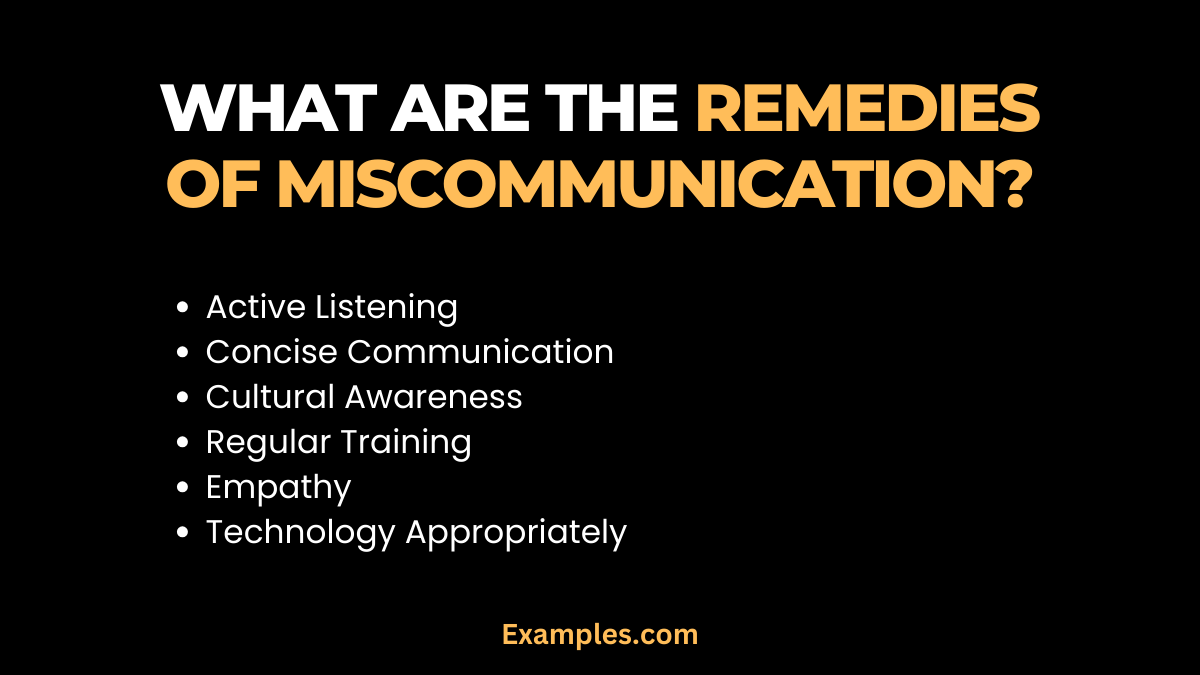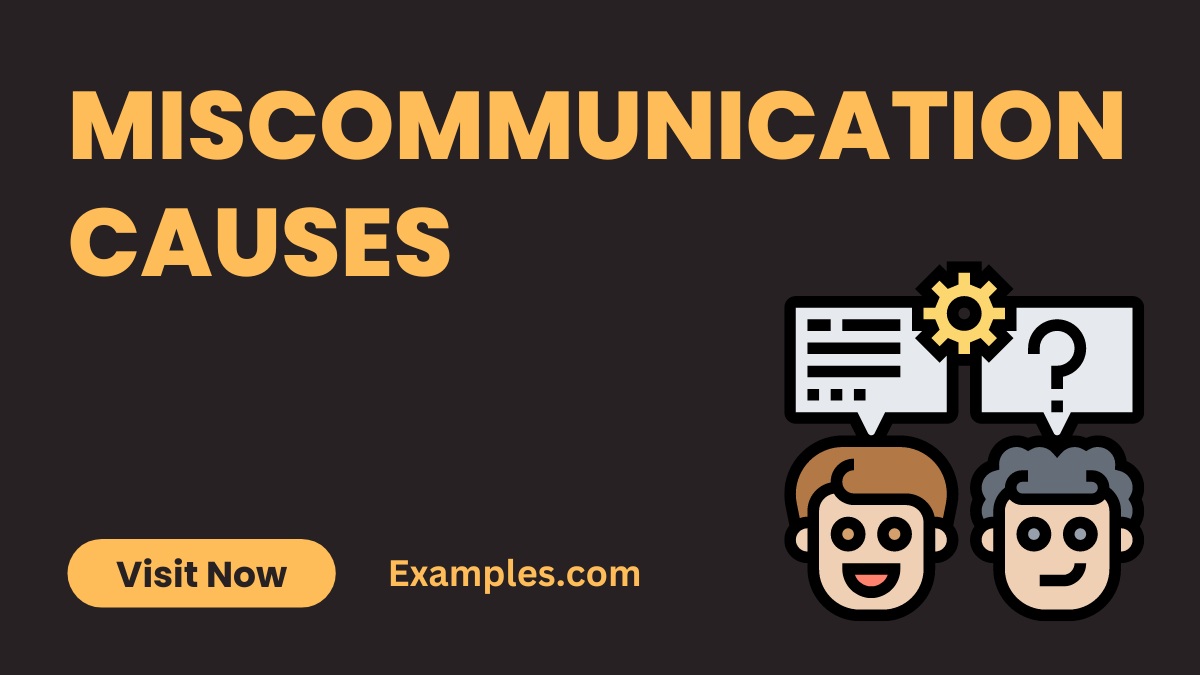Miscommunication Causes
Miscommunication is a common, yet often complex, phenomenon in human interaction. At its core, it arises from a mismatch between the sender’s intent and the receiver’s interpretation. This comprehensive guide delves into various causes of miscommunication, from subtle nonverbal cues to complex cultural differences. We’ll explore real-life communication examples, tracing the origin and history of miscommunication, and offer practical tips to identify and mitigate these challenges. Understanding these dynamics is crucial for effective communication, whether in personal relationships, the workplace, or cross-cultural interactions.
What are Miscommunication Causes?

The causes of miscommunication are varied and can include factors like language barriers, cultural differences, assumptions, and misinterpretations. Other common causes are lack of clarity in conveying messages, emotional influences that impact how messages are received or understood, distractions during communication, and technical issues in communication channels. Miscommunication can also result from differences in perception, contextual misunderstandings, or nonverbal cues being misread. Understanding these causes is essential to prevent miscommunication.
- Lack of Clarity: Unclear or vague language can lead to misunderstandings.
- Cultural Differences: Varied cultural backgrounds can result in different interpretations of the same message.
- Nonverbal Signals: Body language or tone that contradicts verbal communication can confuse the message.
- Assumptions and Perceptions: Making assumptions or having preconceived notions about the other person’s intent.
- Language Barriers: Differences in language or jargon can impede understanding.
- Distractions: External factors or multitasking can lead to partial or misunderstood messages.
- Emotional State: The emotional state of the communicator or receiver can affect how messages are sent or received.
- Technical Issues: In the digital age, technology glitches can distort or interrupt communication.
20 Examples of Miscommunication Causes
Miscommunication often stems from everyday interactions, where subtle nuances in language or context can lead to misunderstanding. These daily life examples highlight how easy it is for messages to be misinterpreted due to factors like tone, body language, and cultural differences. Understanding these causes is key to improving our communication skills and fostering clearer, more effective exchanges in various settings.
- “I thought you were picking up the kids today.” – A lack of clear communication about responsibilities leads to confusion in family logistics.
- “But you said the meeting was optional!” – Misunderstanding the importance of a work event due to vague phrasing.
- “I didn’t know you were being sarcastic.” – Sarcasm in text messages can easily be misread without vocal tone cues.
- “I was just joking.” – Humor can be misinterpreted as offense without proper context or understanding between parties.
- “Your email sounded angry.” – Misconstruing the tone of written communication, interpreting neutrality as hostility.
- “I didn’t realize that was due today.” – Misunderstanding deadlines due to unclear or missed verbal instructions.
- “That’s not what I meant.” – Poor choice of words leading to a different interpretation than intended.
- “I forgot to mention it earlier.” – Omitting crucial information in conversation, causing later confusion.
- “Why didn’t you text me back?” – Assuming negative intentions from a lack of immediate response in digital communication.
- “I thought you knew how I felt.” – Assuming others understand unexpressed feelings or thoughts.
- “You’re always so busy.” – Misinterpreting someone’s availability or priorities without direct communication.
- “I didn’t catch that, could you repeat?” – Physical barriers like noise hindering clear verbal communication.
- “In my country, that’s a compliment.” – Cultural differences causing misinterpretation of intentions.
- “I meant to reply to that email.” – Forgetting or delaying responses leading to misunderstandings in urgency or interest.
- “I didn’t realize you were upset.” – Missing nonverbal cues of emotion during conversations.
- “The tone of your text seemed off.” – Misreading the emotional tone behind digital messages.
- “I thought it was implied.” – Relying on implicit communication which is not caught by the other party.
- “Your silence made me think you agreed.” – Interpreting silence as agreement without verbal confirmation.
- “I didn’t understand the instructions.” – Lack of clarity in directions leading to mistakes.
- “I thought it was just a casual suggestion.” – Misinterpreting the seriousness or formality of a suggestion.
Examples of Miscommunication Causes in the Workplace
Miscommunication in the workplace often stems from unclear instructions, assumptions, language barriers, and cultural differences. A common example is when instructions are given without sufficient detail, leading to errors in task execution. Improving workplace communication involves providing clear, detailed instructions, encouraging feedback for clarity, and being mindful of diverse communication styles.
- Jargon and Technical Language: Using industry-specific jargon or technical language can be confusing to employees not familiar with the terminology. Improving this involves using simpler language and ensuring everyone understands the terms used.
- Assuming Knowledge: Assuming that employees have certain knowledge can lead to misunderstandings. It’s better to confirm understanding and provide detailed explanations.
- Email Misinterpretation: The tone of emails can be easily misinterpreted. Using clear language and re-reading emails before sending can help prevent this.
- Non-Verbal Cues in Virtual Meetings: Non-verbal cues are harder to interpret in virtual settings, leading to misunderstandings. Encourage open communication and clarification during virtual meetings.
- Cultural Differences: Diverse work environments can lead to miscommunication due to varying cultural norms. Providing cultural sensitivity training can be beneficial.
Examples of Miscommunication Causes in Relationships
In relationships, miscommunication often arises from assumptions, lack of active listening, nonverbal cues being misinterpreted, and emotional responses. For instance, partners may misinterpret each other’s actions or words based on assumptions without seeking clarification. To improve communication in relationships, it’s important to practice active listening, ask clarifying questions, and discuss feelings openly to avoid misunderstandings.
- Assumptions About Feelings: Assuming you know how your partner feels without asking can lead to miscommunication. It’s crucial to ask and listen to your partner’s feelings.
- Text Message Misinterpretation: Texts can be easily misinterpreted without tone and non-verbal cues. Clarify unclear texts and have important conversations in person.
- Not Listening Fully: Focusing more on responding than listening can cause miscommunication. Practice active listening, where you fully concentrate on what’s being said.
- Different Communication Styles: People have different styles of communication. Understanding and adapting to each other’s styles can improve communication.
- Avoiding Tough Topics: Avoiding difficult discussions can lead to misunderstandings. Facing tough conversations and discussing issues openly is key.
What are the Effects of Miscommunication?
Miscommunication can have a wide range of negative effects. In professional settings, it can lead to mistakes, decreased productivity, and conflicts. In personal relationships, miscommunication often results in misunderstandings, hurt feelings, and strained relationships. It can also lead to missed opportunities and can have severe consequences in high-stakes environments like healthcare or law enforcement. Overall, miscommunication disrupts the flow of accurate information, leading to confusion and potential errors.
Miscommunication can have significant impacts, both in personal and professional contexts. Key effects include:
- Relationship Strain: Misunderstandings can lead to tension and erode trust in personal and professional relationships.
- Decreased Productivity: In the workplace, miscommunication can cause errors, delays, and inefficiency, impacting overall productivity.
- Conflict: Miscommunication often results in conflicts, disagreements, and unnecessary arguments, leading to strained interactions.
- Stress and Frustration: Continuous miscommunication can cause emotional stress and frustration, affecting mental well-being.
- Reputation Damage: Businesses may suffer reputation damage and strained customer relations due to miscommunication.
- Financial Losses: In business, miscommunication can lead to costly mistakes and financial losses.
- Decreased Morale: Persistent miscommunication within teams can lower morale and motivation, affecting team dynamics and performance.
What are the Remedies of Miscommunication?

Remedies for miscommunication involve several key strategies. Firstly, improving active listening skills ensures better understanding and fewer assumptions. Secondly, clear and concise communication helps prevent ambiguity. It’s also important to confirm understanding, especially in critical conversations. In diverse environments, being aware of cultural differences can reduce miscommunication. Additionally, using appropriate communication channels for different messages can improve clarity. Finally, regular feedback and open discussions about communication styles can help identify and address ongoing issues.
To remedy miscommunication, consider the following strategies:
- Active Listening: Enhance communication by fully focusing on the speaker, clarifying any uncertainties, and confirming your understanding of the message. This involves not just hearing but truly understanding the speaker’s intent.
- Clear and Concise Communication: Be straightforward in your messaging. Avoid using complex jargon that might confuse the listener and keep the communication simple and to the point.
- Cultural Awareness: Understand and respect the diverse cultural backgrounds of your audience. This includes being aware of different communication styles and adapting your approach accordingly.
- Regular Training: In organizational settings, regularly train staff in effective communication and team dynamics to improve overall interaction and understanding.
- Empathy: Demonstrating understanding and consideration for others’ feelings and viewpoints can significantly reduce miscommunication. It involves putting yourself in someone else’s shoes.
- Technology Appropriately: Use communication technology effectively. Decide when it’s best to send an email, make a phone call, or have a face-to-face meeting depending on the nature of the message.
Tips on How to Avoid Miscommunication
Here are the tips to avoid miscommunication:
- Confirm Understanding: After conveying a message, ask for feedback to ensure it’s understood correctly. This practice helps in avoiding misinterpretations.
- Avoid Assumptions: Never assume others have the same knowledge or viewpoint. Clarify and verify to prevent misunderstandings.
- Body Language Awareness: Understand that nonverbal cues like facial expressions and gestures can significantly impact how messages are perceived.
- Clarify and Summarize: During conversations, periodically summarize key points and ask for clarifications to ensure everyone is on the same page.
- Consistency in Messaging: Ensure that your message remains the same across all communication channels to avoid conflicting information.
Miscommunication can arise from a multitude of causes, ranging from cultural differences to technological barriers. It’s crucial to recognize these factors to prevent misunderstandings and maintain effective interactions. Enhancing our communication skills and being mindful of the nuances in both verbal and non-verbal cues can significantly reduce miscommunication incidents. Thus, fostering a clearer understanding and improving relationships in all aspects of life.



